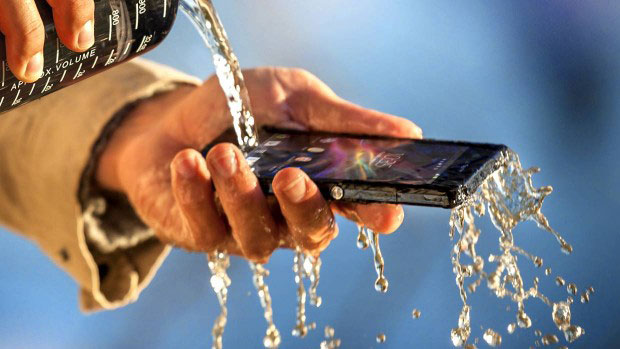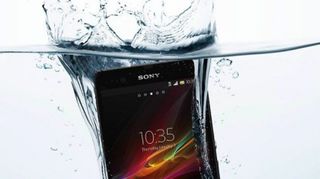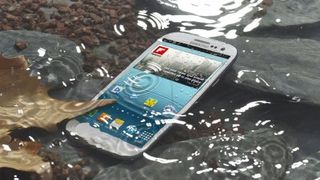Meet the team who want every smartphone waterproofed in five years
P2i tells us about the future of nano-tech waterproofing

Statistics show the second leading cause of smartphone failure is liquid damage (the first being damaged screens). 33% of broken smartphones are accidentally damaged by water, with rain, drinks, toilets and showers all being common causes of this often-irreparable damage.
After early efforts at splash-proofing phones, such as the otherwise mundane Motorola Defy, Sony came up with the water-resistant Xperia Z in 2013. The Xperia Z offered full submersion thanks to internal seals and gaskets. Alternatives previously only came in the form of bulky protective cases, which mostly hinder the design and functionality of the phone.
Implementations of gaskets and seals to cover precious charging and audio ports have since become more compact, as we saw with the advancement between the original Xperia Z and the Z1.
But it's still an inelegant solution, and ultimately the technology can still fail if subjected to the higher pressures of deeper submersion. The Xperia Z and Z1 cannot claim to be fully waterproof as there's still potential for the seals to degrade over time, and there is a limit to how long the phones can operate whilst submerged.

This year, water-resistance and even waterproofing has become a specification to expect on many of top-end phones. Samsung's brand new Galaxy S5 comes with an IP67 rating, which means it is totally protected against dust and against the effect of immersion up to 1m.
This is thanks to a combination of protective covers over the USB 3.0 port and a nano-coating from an unspecified provider, whilst the unreleased LG G3 is due to feature water and dust proofing.
Sony has taken things a step further with its new Xperia Z2 flagship, which sports an IP58 rating. This allows it to go to a depth of 1.5m for up to 30 minutes.
Get the best Black Friday deals direct to your inbox, plus news, reviews, and more.
Sign up to be the first to know about unmissable Black Friday deals on top tech, plus get all your favorite TechRadar content.

It's likely all the leading manufacturers will be have life-proofed smartphones by the end of the year, ones that don't sport the traditional rugged, tough look. There's a raft of companies that we looked at late last year all hoping to make the most of this trend in waterproofing, such as Liquipel, HzO, and P2i.
However it's still too early to tell which, if any, of these companies will become the dominant force in smartphone waterproofing, or whether smartphone manufacturers will develop their own technology.
P2i opens its doors
TechRadar visited P2i's UK headquarters on its 10th anniversary to find out just how difficult it is to make a smartphone immune to water. Could it be that in less than a year we'll have a phone devoid of ugly covers yet still able to function in a glass of water?
The nanotechnology's inventor Dr. Stephen Coulson was very bullish about the technology, saying that it can "coat anything other than liquids, and things that aren't living."

Actually, after a hesitation he admitted: "Well, that's not strictly true, we could treat living things, but after the process they'd cease to be living, because our process involves a vacuum."
Feline-water-protection might be out of the question, but there's plenty of space for nano-coatings to become a standard application during the manufacturing process of any device. That's what companies like P2i are aiming for. It's already becoming a key battleground, proven by the fact P2i holds of over 175 patents to protect its waterproofing process.
There are already phones on the market featuring earlier revisions of P2i's splash-proof nano-coatings such as Motorola's Moto G, Moto X and Xoom 2. The next implementation of this technology, known as 'Dunkable', will allow devices to be fully submerged in water or almost any other liquid without suffering any of the corrosive effects that you'd expect.
So how does it work?
While there are a number of methods to make a phone waterproof, P2i reckons it's got the most inoffensive that won't upset any smartphone designers.
